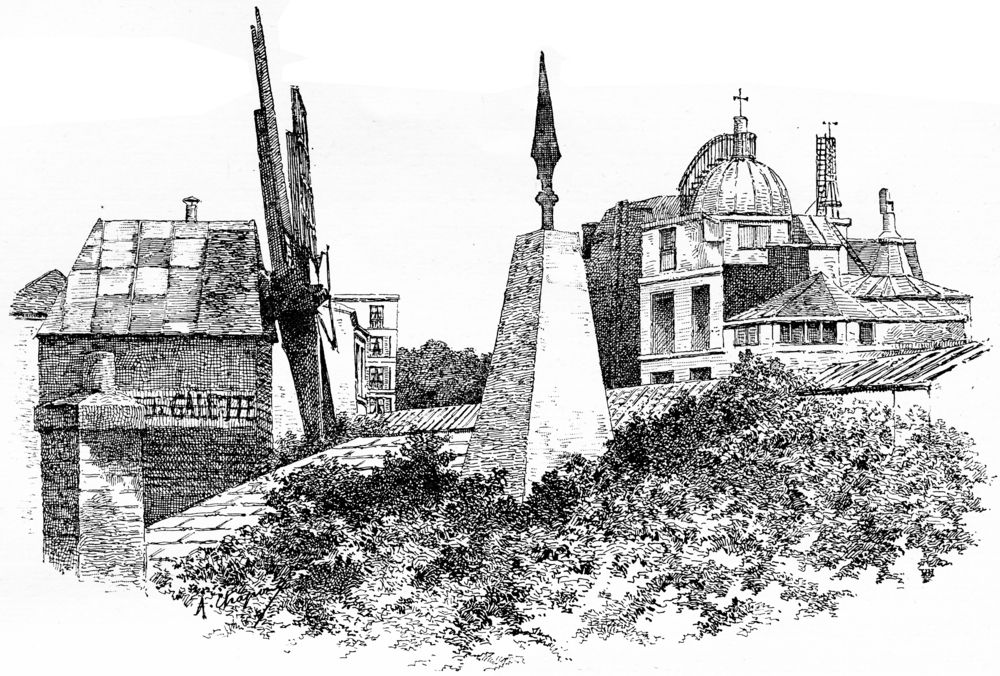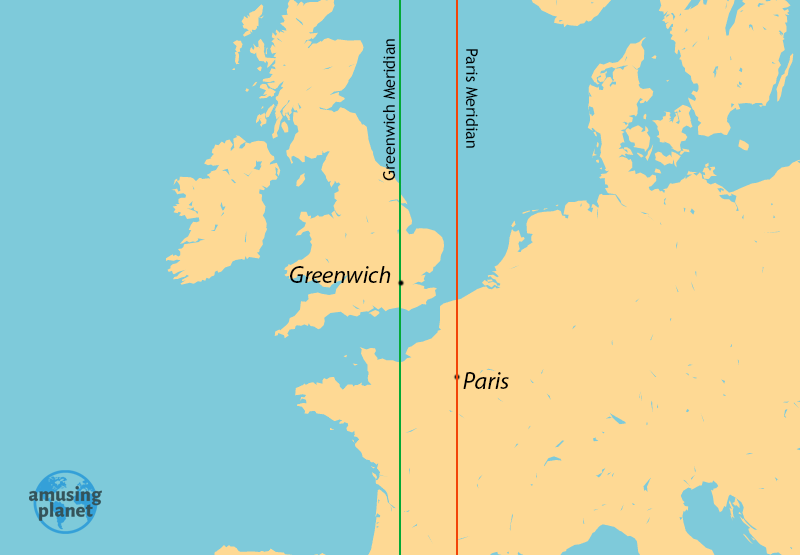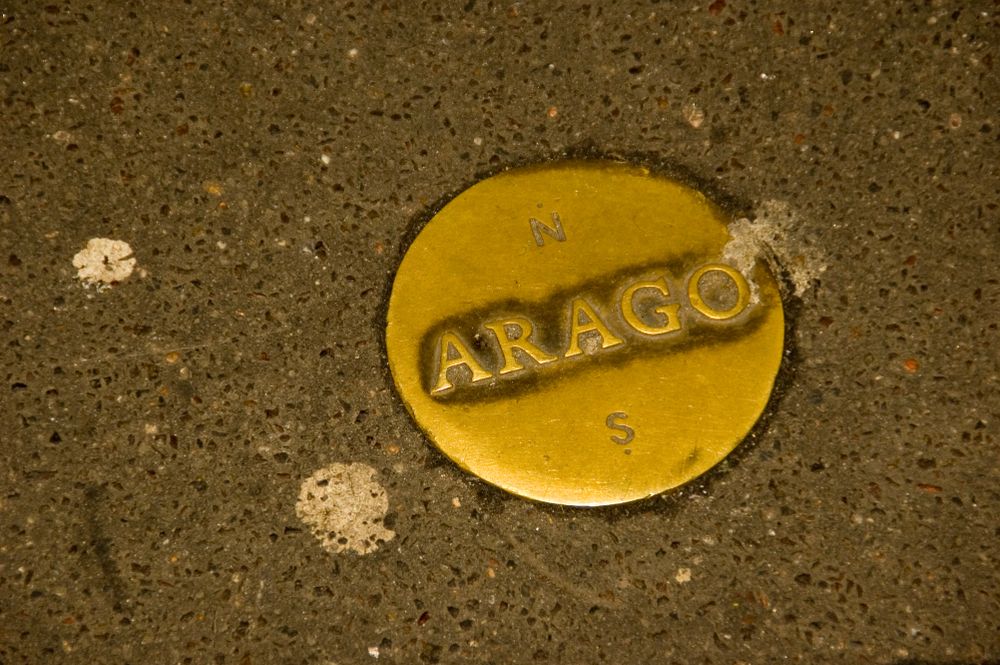Railways, in the late 19th century, ushered in a revolution in transport, but with that arose one unexpected problem.
Back then, there was no standardized time, and every town and city kept their own clock which varied from their neighbors sometimes by several hours. This created grave inconvenience for rail travelers, because they couldn’t tell at what time a train would arrive at a particular station and how long a journey would be because arrivals and departures on railway timetables were published in local time. For the benefit of passengers, in 1857, one railway guidebook published the local times in approximately one hundred American cities compared to noon in Washington, and you can see how severe the problem was.

The need for standardized time became a pressing matter, not only for the railways, but for the postal department and telegraph companies too. The British had better foresight than the Americans, and by the 1840s, the Great Western Railway had already standardized their time based on the local time at Greenwich where the Royal Observatory was situated. Everyday, railway stations along the Great Western Railway’s route, would receive time signals by telegraph from Greenwich and station masters would set or adjust their clocks according to it.
In 1870, Charles F. Dowd, the principal of an obscure liberals art college suggested that America should follow suit, and proposed dividing up the country into four time zones centered around the Washington meridian. This was the first time anyone had proposed multiple time zones for any country. But Dowd’s suggestions were mostly ignored. One prominent railroad executive even asserted that the centuries-old local time system “and the hold it has upon the literature, manners, and customs of the people is clearly beyond the power of the greatest power in the land [the railroads] to alter.”
Ironically, Dowd died underneath the wheels of a locomotive in 1904.
The first person to propose a consistent treatment of time across the world was Stanford Fleming, the chief engineer of the Canadian Pacific Railway, in 1876. He suggested using the Greenwich meridian over Washington’s. The British Government was so pleased at the proposal that they forwarded Fleming’s memoir to eighteen foreign countries and to various scientific bodies in England.

Greenwich Observatory, London. Photo: Leonid Andronov/Shutterstock.com
A universal time was beginning to make sense to other organizations as well, but not everyone was delighted at the arbitrary choice of the prime meridian's location at Greenwich. Professor Piazzi Smyth, Astronomer Royal for Scotland, demanded to know: “If there had to be a common prime meridian, why not the Great Pyramid in Egypt?”
Others also voiced their discontent. Astronomers in Bologna wanted the prime meridian to be placed in Jerusalem. A geographer in Geneva wanted the prime meridian to go straight through the Bering Strait, which separates Russia and from the United States.
Eventually, the International Meridian Conference met in Venice in 1881 to decide on these issues. The astronomers ruled that the prime meridian must pass through an astronomical observatory of the highest order, and on the basis of this criteria ruled out many nominations such as the Azores, Tenerife, the Temple of Jerusalem and The Giza Pyramid. This left only the observatories at Paris, Berlin, Greenwich and Washington as the suitable candidates. After several successive meets and lengthy debates, the conference decided that Greenwich was the best choice because nearly three-quarters of navigators were already using Greenwich to calculate their longitudes and time at sea.

A marker for the Paris Meridian, circa 1890. Photo: Morphart Creation/Shutterstock.com
A few delegates disagreed. France proposed the Paris Meridian, citing reasons that the Greenwich meridian was not neutral enough as the British did not use the metric system. Representatives from USA and England countered that the metric system wasn’t neutral either because it was created by the French. Eventually, France and Brazil abstained from voting and San Domingo voted against. But the majority supported Greenwich, and in 1884, the meridian passing through the Royal Observatory was adopted universally as the Prime Meridian.
France was not the only one opposing. Portugal, The Netherlands, Greece, Turkey, Russia, Ireland, and most of Central and South America except Chile, also rejected Greenwich.
In December 1891, E. Pasquier wrote in Ciel et Terre calling for peace:
The almost unanimous adhesion of civilized nations to the meridian of Greenwich should cause the partisans of other meridians to lay down their weapons, and henceforth all efforts should be directed to settling definitely an hourly unification at once simple, rational and practical.
As France clung to the Paris meridian, a death blow was dealt from within. In 1896, a bill was introduced into the Chamber of Deputies proposing Greenwich Mean Time as the legal time in France. The bill diminished Paris Mean Time by 9 minutes 21 seconds, as the Paris Meridian was situated 2 degrees 20 minutes east of Greenwich. The bill was passed in 1898 by the Chamber to the Senate, who duly passed it to a Commission, where it stayed for twelve long years. Apparently, the Ministries of Commerce, Industry, Posts and Telegraphs, and Public Works all accepted the bill but it was strongly opposed by the Ministries of Public Instruction and the Navy. The bill finally became law in 1911, and the historic Paris Meridian that had once helped to calculate the circumference of the earth had lost its coveted status.

Today, the invisible line that goes right though the Paris Observatory is marked on the streets of Paris by 135 bronze medallions laid flush with the cobblestone blocks. The medallions are spread over a distance of 9 km between the northern and southern limits of Paris. Each medallion is 12 cm in diameter and marked with the name ARAGO along with N and S pointers.
The artwork plus memorial, installed in 1994 by a Dutch artist, pays homage to the 19th century astronomer François Arago, who calculated the Paris meridian's arc with great precision between Shetland and the Balearic Islands.

Arago medallion. Photo: Spirit Stock/Shutterstock.com

The Paris Meridian marked across the grass outside the observatory. Photo: diamond geezer/Flickr
References:
# Derek Howse, Greenwich Time, https://archive.org/details/GreenwichTime/mode/2up
# Wikipedia, https://en.wikipedia.org/wiki/Paris_meridian
# Wikipedia, https://en.wikipedia.org/wiki/International_Meridian_Conference
# Matthew M White, https://web.archive.org/web/20060911152247/http://bpp.wharton.upenn.edu/mawhite/Papers/TimeZones.pdf



Comments
Post a Comment